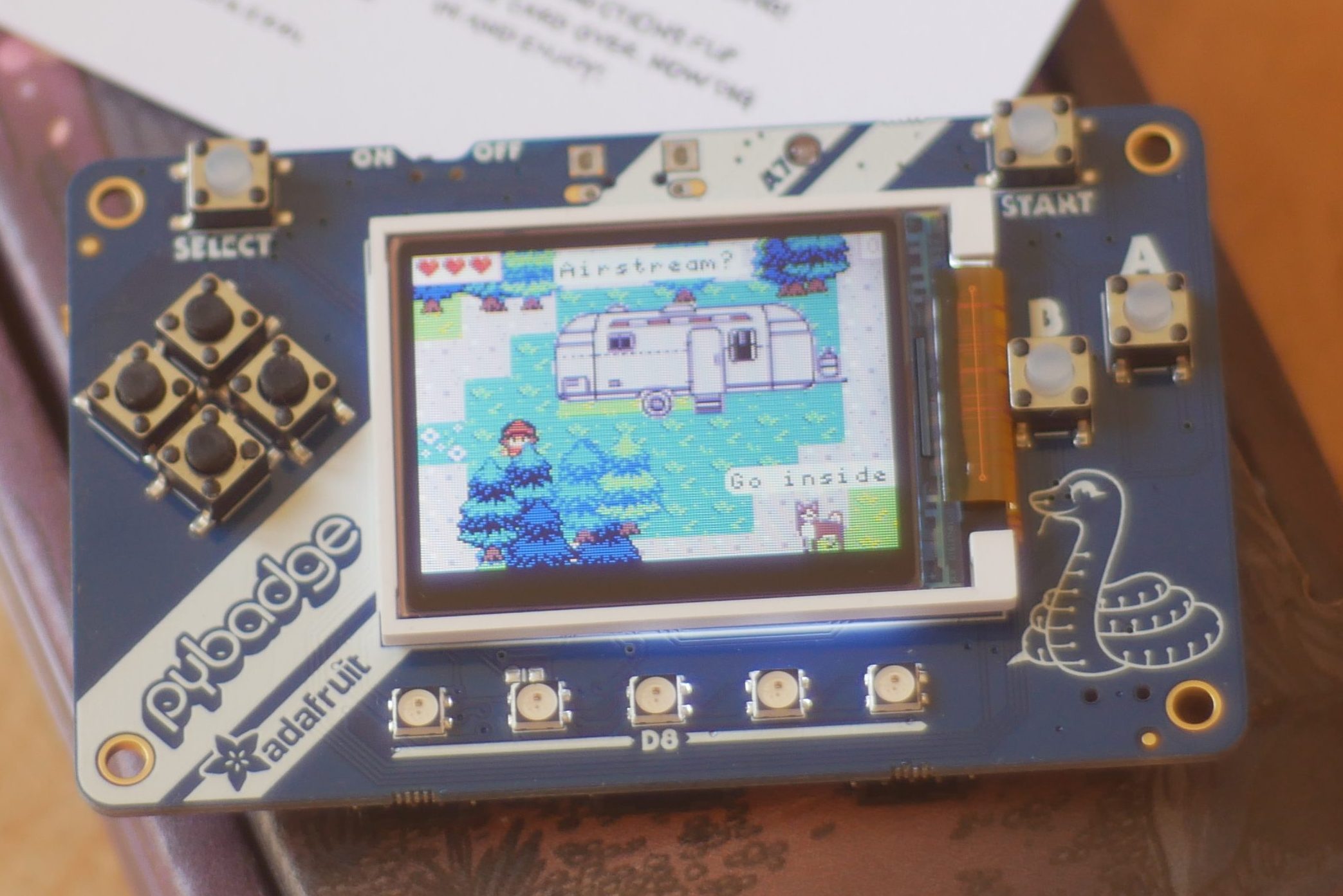
Twenty years ago, my spouse-to-be and I met and became friends. During the pandemic, we got engaged and wanted to create a unique and memorable wedding invitation for our friends and family.
Due to a chip shortage, we used both Adafruit EdgeBadge and PyBadge LC to create interactive invitations. These credit card-sized boards are perfect for this purpose, boasting a range of impressive features. Each board includes a 1.8″ 160×128 color TFT display connected to its own SPI port, eight game/control buttons with nice silicone button tops, a triple-axis accelerometer for motion sensing, and a light sensor that points out the front. They also have a built-in buzzer mini-speaker, a mono Class-D speaker driver, a LiPoly battery port with built-in recharging capability, a USB port for battery charging, programming, and debugging, and two female header strips for potential expansions. Additionally, the EdgeBadge supports TensorFlow Lite for Microcontrollers, enabling machine learning features such as voice commands and gesture controls.
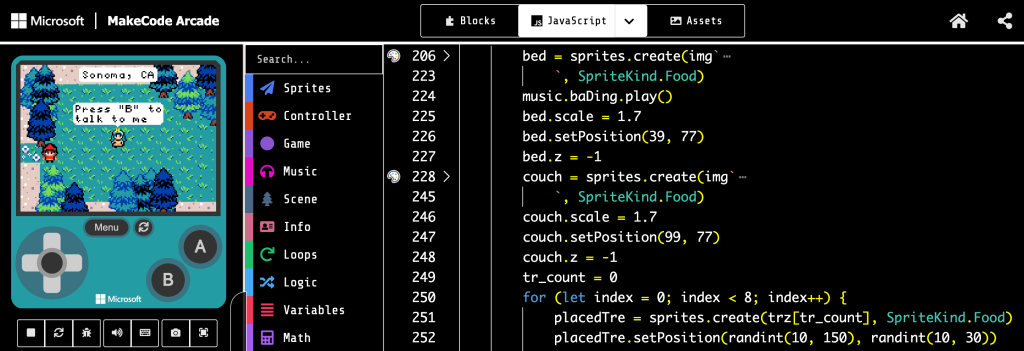
The game was developed using Microsoft MakeCode Arcade with JavaScript. Unique sprites were created using online sprite generators and tweaked for enhancement. Generic assets like trees were sourced from MakeCode Arcade. We also commissioned The Time Cowboy – Jake Lawrence, an Australian Cartoonist / Storyboard Artist, to create the box art and website art, some of which we turned into sprites for a cohesive design.
Designing a game for these low-cost, low-power devices presented its own set of challenges. Despite their capabilities, the first version of the game I created ran great on my MacBook, but the FPS was absolutely atrocious on the devboard! Initially, I thought about recreating the entire venue in the game to allow for an open-world experience, but it was too much for the board to handle.
I had to do some research and bust out some old video game tricks, like efficiently utilizing the same assets and dividing the map into many seamless “levels” that would be triggered and quickly loaded. This was both fun and challenging for someone who typically does bioinformatics work.
for (let index = 0; index < 8; index++) {
placedTre = sprites.create(
trz[tr_count],
SpriteKind.Food
)
placedTre.setPosition(
randint(40, 160),
randint(5, 30)
)
tr_count += 1
if (tr_count >= 4) {
tr_count = 0
}
}Because I’m of North Indian Mughal descent, our wedding involved multiple days with different rituals, such as an entire messy day where we get covered in turmeric, and another day dedicated to having intricate patterns painted on us with henna. We thought a campground about 60 miles north of San Francisco would be perfect for these multiple days of celebration. This campground had many Airstreams, which we thought would be a comfortable way for our friends and family to spend the time, even if they weren’t familiar with camping.
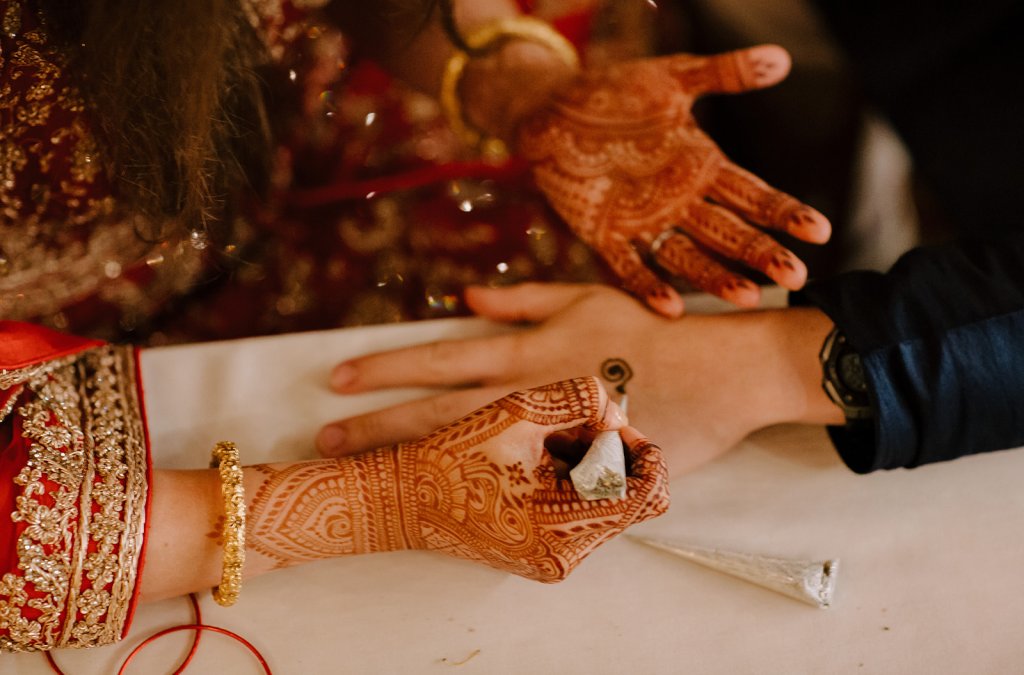
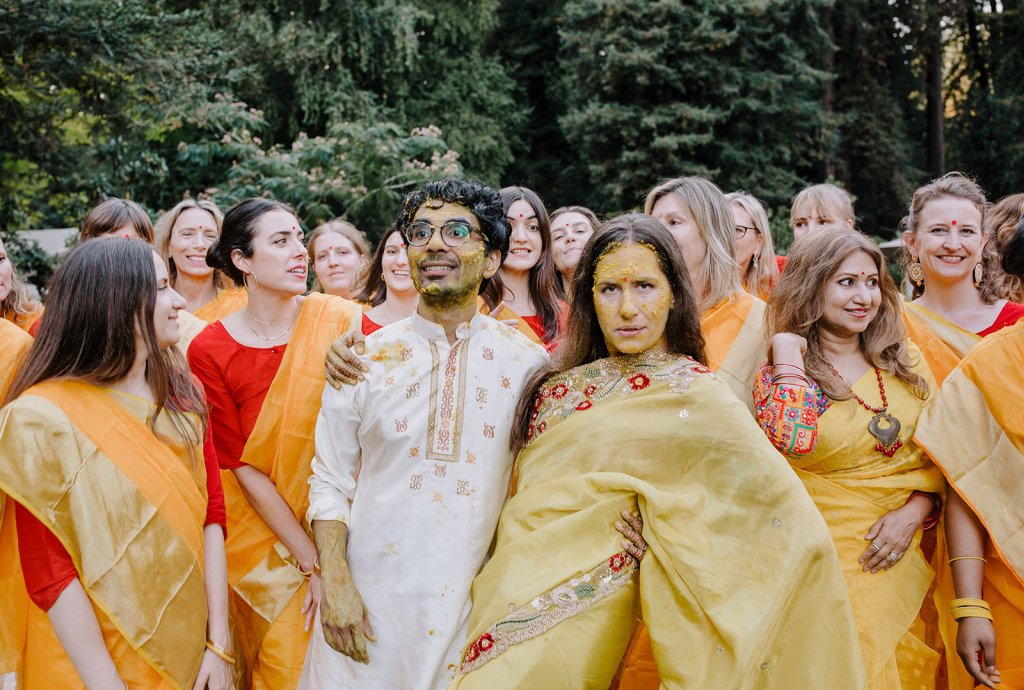

The music for the game was also a fun project. For the end of the game, I created a MIDI cover of a Depeche Mode track:
“Come with me into the trees,
We’ll lay on the grass and let the hours pass
Take my hand, come back to the land
Let’s get away, just for one day.”
All of this was actually inspired by DEFCON badges, and you can check out the finished game online at MakeCode Arcade, minus the hardware, in your browser. I highly recommend using these kinds of low-cost devboards as gifts to friends and family. They can create their own projects using them, which is also fun to see what people end up making.

Batches of invites ready to send.
Combining retro gaming charm with cutting-edge tech and cohesive design elements makes for an unforgettable and fun invitation. Try it out and make your invite the talk of the town!


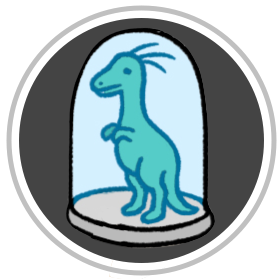


Pingback: Couple makes custom gaming handheld wedding invites & they’re incredible – Dexerto – Wedding Marketplace
Pingback: The Finest Marriage ceremony Invitations Are Handheld Video Sport Consoles - Techbrusts
Pingback: Adafruit Badges Turned Electronic Invitations | 3d print ......errori ed esperienze,
Pingback: Adafruit Badges Turned Electronic Invitations – Mist Vista